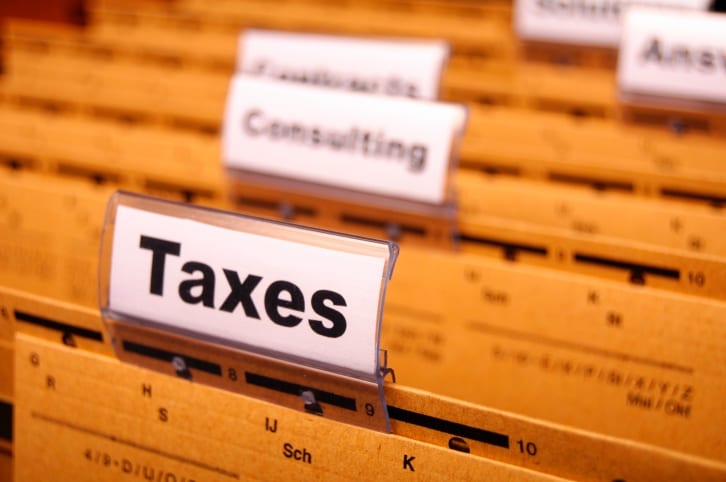- browse by category
- Audit Assistance
- Business and Taxes
- Celebrities in Tax Debt
- Cryptocurrency Taxes
- Economic News
- Foreign Banking
- Innocent Spouse
- IRS debt settlement
- IRS Headlines
- IRS Wage Garnishment
- Marriage & Divorce
- Payroll Tax
- Retirement
- Revenue Officers
- State Tax Headlines
- Stop IRS Debt
- Success Stories
- Tax and Politics
- Tax Attorney
- Tax Codes
- Tax Debt Help
- Tax Evasion
- Tax Levy
- Tax Lien
- Tax Payment Plans
- Tax Return Filing
- Tax Tips

Getting your tax returns right the first time can be a tricky task, but with the right tips and know-how, you won’t have to wait an extra few weeks to get your tax return. Here’s a few tips on filing an accurate tax return that will help keep you in the IRS’s good graces. You may even get your refund quicker.
5 Tips to File an Accurate Tax Return
Have all the necessary records
Before you can file an accurate tax return, you’re going to need all the necessary forms and papers. Some required documentation will have to be submitted if you file via snail mail. Different documents will be needed depending on whether they show income gains or losses. To show income, you’ll need any and all W-2 and 1099 forms. Other income forms include those showing jury duty pay, alimony received, K-1 statements that show partnership or trust income, and records of rental income. Other documents prove your deductions. Those include records for medical care expenses, mortgage and student loan interest, charitable gifts, moving expenses, educational expenses, and employment expenses (like uniforms or tools).
File with E-file for an Accurate Tax Return
Filing your tax returns with the IRS’s e-file system increases the accuracy of your tax returns and saves precious paper. E-file is fast becoming the top choice for taxpayers. More than 43 million chose to electronically file their tax returns this year, representing a 4 percent increase from the prior year. If you submit your tax information electronically, it’s processed more quickly and more accurately. E-file checks for mathematical errors that sneak past the human eye and for other easily forgotten necessary information (which can lead to lengthy delays with paper filings). Aside from the increase in accuracy, filing your returns with e-file also speeds up the refund process.
Carefully Enter All Names and Numbers
There’s a reason some of the easiest mistakes to prevent are the most common. The most common mistakes filers make when it comes to filing tax returns center on incorrect information, like Social Security numbers, mathematical errors (even basic ones), entering data on the wrong lines on a tax form, and misspelling one’s own name. But even if all of this information is entered correctly, another mistake can prevent people from receiving a prompt tax return. Incorrectly entering one’s own bank account or bank routing numbers can add days or even weeks to the wait time to get your refund. So to get a prompt return on your taxes, make sure everything is accurate by checking your numbers and spellings.
Report All Foreign Income and Assets
If you own or have a stake in overseas financial assets, you may need to report it to the IRS. Having overseas assets helps with a financial portfolio. But if you own $10,000 or more across all of your international financial accounts, then it has to be reported to the feds. This is true even if you’re not the owner, so long as you have authority to perform transactions with the account. The same goes for other forms of financial assets, like securities and stakes in overseas corporations. Just make sure to keep a Treasury Department Form 90-22.1 and/or IRS Form 8938 handy.
Keep Out of the IRS’s Watchful Eye
Sometimes the most simple and straightforward tax returns can warrant IRS suspicion and unwelcome attention. The IRS utilizes computer programs that search for red flags for audits, but some signs are more noticed than others. If an IRS agent finds them on your return, an IRS they can soon make changes to your tax information. That can keep your return in the pipeline and your return in limbo. These signs include erroneously claiming certain tax credits and deductions that aren’t qualified. They can also include choosing the wrong filing status for the taxpayer. Filing a paper return is also a sign, as well as making mathematical errors – but these can be avoided by e-filing if you have access to a computer.
Got any Tips to File an Accurate Tax Return?
What are your tips for filing an accurate tax return? Tell us what they are! Like this post, leave your comments below and tweet us your questions to @stopirsdebt!
Leave Comments

Top Tax
secrets revealed
Sign up for our newsletter and be the first to find out when exciting IRS news happens. Yes, exciting. We're really into taxes.


